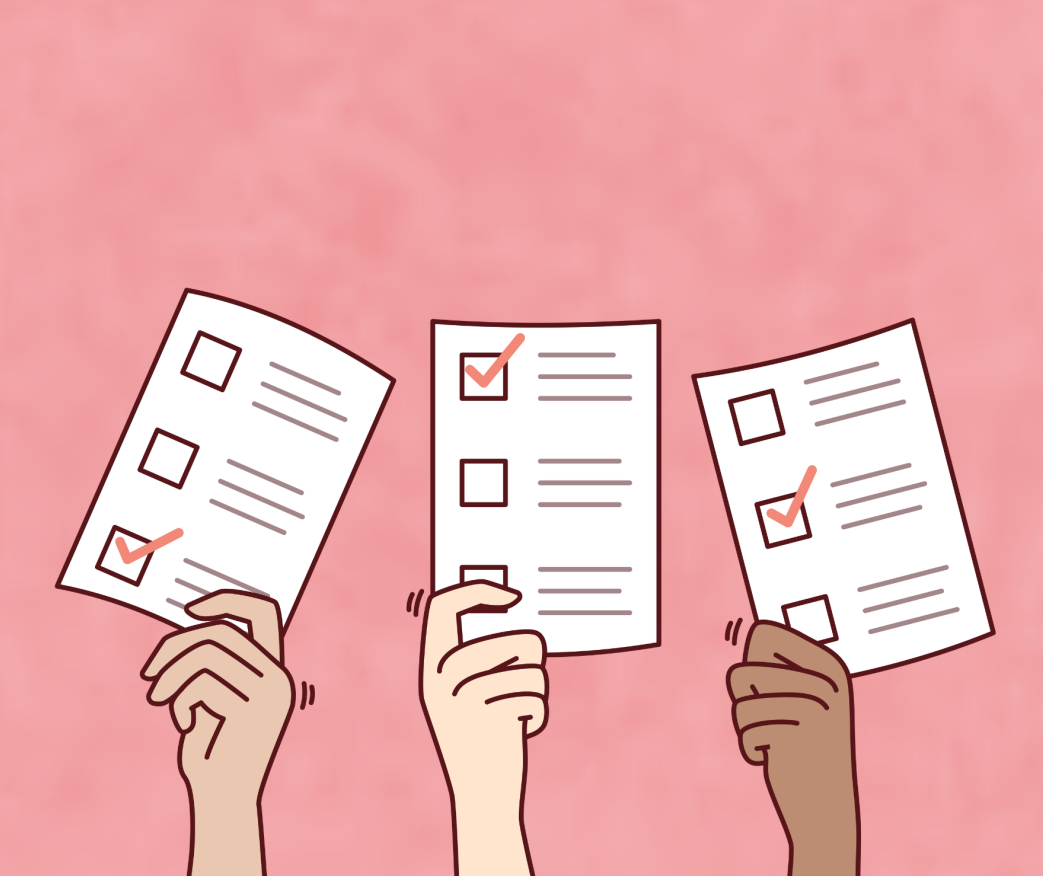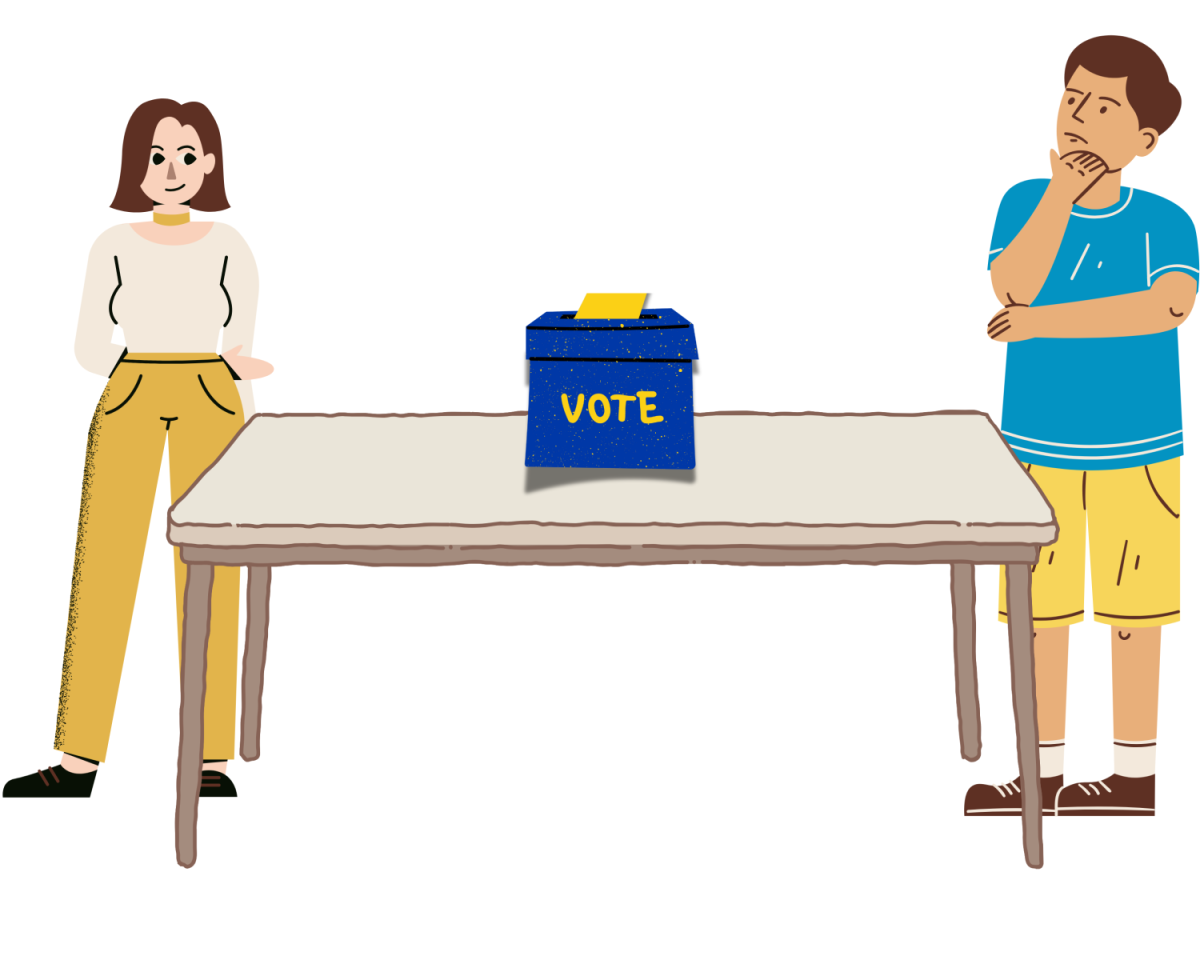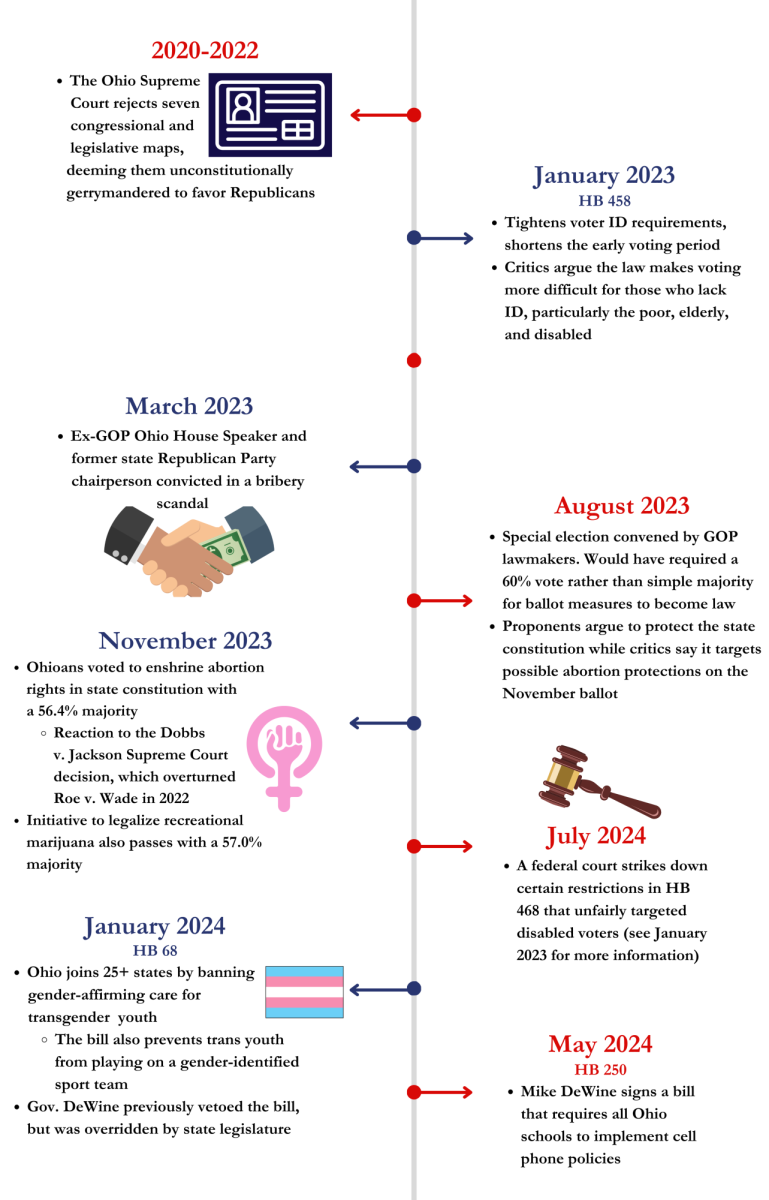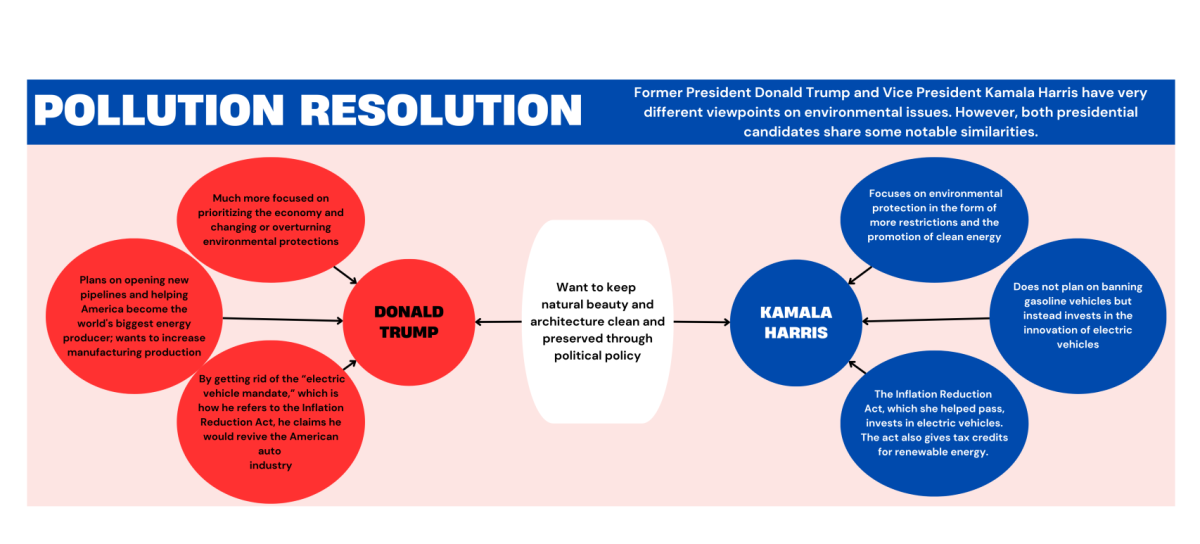Attention on elections

With election season quickly approaching this November, first-time voters are preparing for the big day. Many students at WHHS are eligible to vote and are excited to have an impact on political matters.
“I think it’s a huge privilege to be able to vote in our country,” Maria Min, ‘25, said.
Being granted the ability to vote is a tremendous responsibility in regard to upholding civic duty, one some students are eager to fulfill. However, not all students feel the same way. It can be stressful to declare your political opinion at such a young age. But with resources such as teacher and parent recommendations, it can become easier to feel confident about your vote.
“If you educate yourself and keep up with the news and watch the debates, it’s easy for you to come to a conclusion about who’s the best candidate,” Min said.
To spread awareness about voting for young people, the WHHS Executive Board organized a voter registration drive on Oct. 4, a week before the registration deadline, to help students register to vote. Although many students had already registered themselves, the event showed the simplicity of importance of expressing political opinions.
“You want your voice to be heard,” Nyla Shahanavaz, ‘25, a WHHS executive board member, said.
A common misconception among young voters is that you can’t register to vote unless you’re 18. However, students in Ohio can register to vote as long as they turn 18 by the election. This opens many opportunities for young voters.
“I’m 17, but I turn 18 on [Oct. 11, so] I am registered to vote,” Shahanavaz said.
It can be difficult to keep up with politics as a student, especially with the recent Yondr pouch policy. One of the main ways to reach students when it comes to political events is through social media. Not only social media, but messages and notifications from peers or news websites often inform about politics. Although, students and teachers at WHHS are very open to discussing politics, no matter what your political background is.
“At Walnut specifically, students are a lot more knowledgeable [about politics] compared to other schools,” Shahanavaz said.
Turning 18 in the United States opens many new opportunities, including becoming a legal adult, renting a home, renting a car, adopting a child and, of course, voting. There is an overwhelming amount of possibilities, but considering most 18-year-olds are still in school, many people overlook these privileges, especially voting. Even given the resources to become active in politics, few are invested. Due to this lack of enthusiasm, many students who are eligible to vote choose not to.
“It’s such an overlooked thing you have the power to do,” Shahanavaz said.
Although some are more passionate about politics than others, expressing your political opinion through voting is a privilege that is not taken advantage of by high school students.
“Right now, in all of CPS, only 40% of 18-year-olds are registered to vote, which is kind of crazy; that number needs to go up,” Shahanavaz said.
In January of 2023, multiple new voting restrictions were implemented in Ohio, causing concerns among the community. These restrictions ban using bank statements and pay stubs, as well as other previously accepted forms of identification. Those who do not have another form of ID will not be eligible to vote. This especially affects those who are disabled, elderly or financially struggling, considering these groups do not always have the means to obtain other forms of ID.
“There are certain groups of people who really struggle: young people who are just getting themselves established into their community, … older folks who are no longer driving, and in some cases, have lost important documents,” Alex Linser, Deputy Director of the Hamilton County Board of Elections, said.
In an attempt to spread awareness about voting to more people across the county, the Board of Elections frequently posts on various social media account. This allows them to reach people of all ages and excite those who are unknowledgeable about voting.
“We are very active on Instagram, Facebook [and] X,” Linser said. “We try to reach people there.”
While 17-year-olds are not eligible to vote, they are still encouraged to work at the polls. The board of elections has a program during elections called “Youth at the Booth,” giving 17-year-olds the option to participate in voting-related activities.
“It’s a great way to get experience in public service, learn about the voting process and it looks good on a college resume too,” Linser said.
During the presidential election, thousands of workers are brought in to help succeed in a smooth election. Not only are 225 extra staff members brought into the office, but over 2800 people help work the polls.
These staff members, especially full-time employees, often work 11-hour days, an immense amount of work, separating them from their families. Although it can be tough, staff agreed that it’s very fulfilling to see.
“It’s an extremely rewarding job to know that you have helped to administer our fundamental rights,” Sherry Poland, Director of the Hamilton County Board of Elections, said.
On the Board of Elections, there is an equal number of Democrats to Republicans. Instead of focusing on their differences, they prioritize having a smooth election where all voters can participate.
“It’s easy to work together when we put the differences aside and focus on what we have in common,” Poland said.
Pending Legislation
Legislative activity from the past year
- HB 8– A “Don’t Say Gay” bill, according to it’s opponents, that forces schools to out LGBTQ+ students
- SB 104 (previously HB 183) – A trans bathroom ban that focuses on educational settings, including colleges, and also prevents educational campuses from building gender neutral bathrooms
- SB 83 – An anti-DEI bill that promotes “intellectual diversity” and restricts most diversity-related policies in higher education
- HB 29 & SB 37 – A bipartisan bill that removes some legal difficulties of community reentry for those with a criminal record
- 1 in 6 Ohioans have a criminal record
- SB 101 – Seeks to abolish the death penalty
- HB 124 – Would expand the statute of limitations for victims of rape and childhood sexual abuse, but indefinitely stalled in the house legislature
- HB 445 – Requires schools to include a release time for religious instruction during school days
- The Ohio Senate dramatically altered the recreational marijuana statute that voters passed in November 2023
*SB – Senate Bill
**HB – House Bill
For more information visit:
The onset of fall weather is synonymous with hearing campaign ads on television. Seeing the different shades of leaves fall to the ground next to campaign signs is somethingmost people experience. However, many people do not know how much effort it takes to coordinate these signs for voters to see.
This election cycle, these ads and signs could make significant differences on the local, state and national levels. In Hamilton County, the Democratic Party is attempting to hold on to critical seats in all branches and levels of government.
Locally, the seat that Democrats are putting the most effort into is the county prosecutor, currently held by Melissa Powers. According to local Democratic organizers, this seat has not been held by a liberal candidate for 92 years. The candidate the Democratic party is backing this year is Connie Pillich.
“Everybody is super fired up to elect Connie Pillich, and so we are working really hard on turning out our base,” Macie Grisemer, Executive Director of the Hamilton County Democratic Party, said.
Parties at the county level go to significant lengths to give their candidates the best chance possible to win. This includes a wide variety of things, from getting volunteers to sign up to printing flyers to hand out to curious voters.
“In the Hamilton County Democratic Party, we focus on base Democratic voters,” Grisemer said. “We knock on doors, we send mail, we do digital advertising to turnout base Democratic voters so that all of the campaigns… can focus on the swing folks, the folks they need to persuade.
So, we cover the base and then they go after the persuadable people.”
In this election cycle, candidates are not the only things on the ballot. Many issues are included as well, with some being extremely consequential to the future of elections in Ohio. One of these issues is Issue 1.
“One of the biggest things on the ballot this year is Issue 1,” Grisemer said. “It’s a ballot measure that would put the redistricting power back in the hands of the people; it would take it away from politicians who are and have been drawing their own districts to their advantage.”
If Issue 1 is passed, it would institute sweeping reforms to the process of drawing electoral districts.
“It would make it illegal to manipulate them [electoral districts]…,” Grisemer said. “It’s a bipartisan measure. It’s being spearheaded by a former Republican Supreme Court Justice, Maureen O’Connor, as well as folks on the Democratic side of things, because it’s an unfair system as it is and we are ready for change.”
This election cycle, Ohio is also the site of one of the most heated senate races, between Bernie Moreno and Sherrod Brown. Recent polling has shown Brown down two points to Moreno statewide.
“Polls are helpful barometers to see how things are going,” Grisemer said. “But for everybody on the ground who is knocking [on] doors and doing all of the important work… don’t get distracted [by the numbers] and don’t spend time worrying about that.”
Nowadays, Hamilton County is a Democratic stronghold in an increasingly red Ohio. However, things were not always this way.
“I grew up out in Anderson and… when I was growing up, everybody was a Republican there,” Grisemer said. “But thanks to the hard work of a lot of volunteers, a lot of campaigns, and time… Democrats are winning elections in Anderson now.”
Regardless, both parties are seizing the opportunity this election cycle to try and make Ohio a state that could be won by either Harris or Trump. They are using a variety of measures to do this, particularly focusing on voter turnout.
“We are just focused on building the volunteer infrastructure here so that we can continue to grow our turnout so that we can help with statewide elections,” Grisemer said.
However, the strongest tool a party might possess right now is not their established volunteer structure or their television ads, but rather the enthusiasm they get from the public. According to Grisemer, the current Democratic presidential and vice presidential candidates exemplify this mass appeal.
“What has people fired up the most is probably Kamala Harris at the top of the ticket,” Grisemer said. “We have gone through more yard signs than I have ever seen and a lot of our volunteers… have never seen enthusiasm like this.”
Your donation will support the student journalists of Walnut Hills High School. Your contribution will allow us to purchase equipment, cover our annual website hosting, printing costs and offset competition and conferences fees for students.









